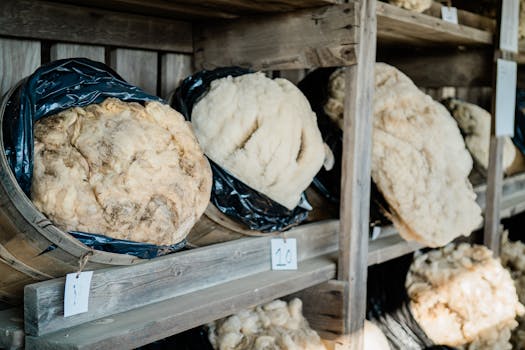
Natural Fibers, Global Markets: Africa’s Role in the Sustainable Textile Revolution
Africa is poised to become a key player in the global textile industry, thanks to its abundance of natural fibers. The continent is home to a wide range of natural fibers, including cotton, flax, hemp, and jute, which are in high demand globally. As the world shifts towards sustainable and eco-friendly materials, Africa’s natural fibers are becoming increasingly important.
Introduction to Natural Fibers
Natural fibers are derived from plants, animals, or mineral sources. They are biodegradable, non-toxic, and require less energy to produce than synthetic fibers. The most common natural fibers are cotton, wool, silk, flax, hemp, and jute. Africa is a significant producer of several of these fibers, with cotton being the most widely produced.
Africa’s Role in the Global Textile Industry
Africa’s textile industry is growing rapidly, with many countries on the continent investing heavily in the sector. The industry provides employment opportunities for millions of people, particularly in rural areas where many of the natural fibers are produced. Africa’s natural fibers are not only used locally but are also exported to other parts of the world, where they are used to make a wide range of products, from clothing and textiles to paper and insulation.
The global demand for natural fibers is on the rise, driven by the growing awareness of the importance of sustainability and eco-friendliness. Consumers are increasingly looking for products made from natural, biodegradable materials, and Africa’s natural fibers are well-positioned to meet this demand. The continent’s cotton, for example, is highly prized for its quality and is used to make a wide range of products, from clothing and textiles to bedding and towels.
Challenges and Opportunities
Despite the many opportunities presented by Africa’s natural fibers, there are also several challenges that need to be addressed. One of the main challenges is the lack of infrastructure and technology in many African countries, which can make it difficult to produce and export natural fibers. Additionally, the continent’s textile industry faces stiff competition from other regions, such as Asia, which has a more established textile industry.
However, there are also many opportunities for Africa’s natural fibers. The continent’s unique fibers, such as flax and hemp, are in high demand globally, and there is a growing market for sustainable and eco-friendly products. Additionally, the African Continental Free Trade Area (AfCFTA) agreement, which came into effect in 2021, provides a framework for African countries to trade with each other more easily, which could help to boost the continent’s textile industry.
Conclusion
In conclusion, Africa’s natural fibers are playing a significant role in the sustainable textile revolution. The continent’s abundance of natural fibers, combined with the growing demand for eco-friendly materials, presents a unique opportunity for Africa to become a key player in the global textile industry. While there are challenges to be addressed, the opportunities presented by Africa’s natural fibers are significant, and the continent is well-positioned to meet the growing demand for sustainable and eco-friendly products.




